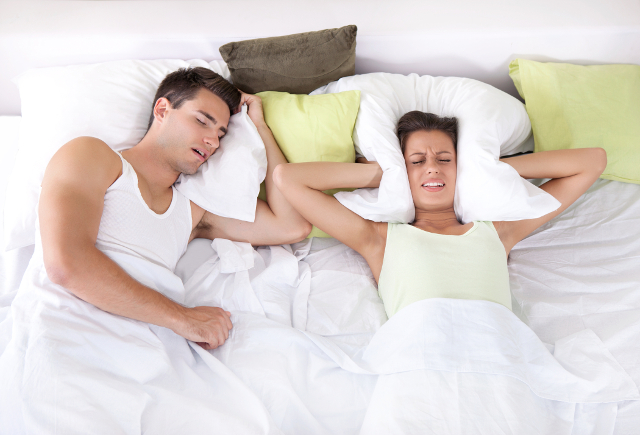Sleep Apnea is a life-threating sleep disorder that negatively impacts the health and quality of life of millions of Americans.
Sleep apnea is the intermittent blockage of airflow during sleep.
I Snore - I Must Have Sleep Apnea
Snoring is a major symptom of sleep apnea, and a sign of partial upper-airway obstruction. However, even though snoring is a very common sleep apnea symptom, it is possible to have sleep apnea without snoring. Likewise, snoring is not a definitive sign of sleep apnea: many people snore without experiencing sleep disorders.
During sleep apnea the inability to inhale oxygen and exhale carbon dioxide upsets the balance of oxygen and carbon dioxide in the blood. The brain senses the low level of oxygen and increased levels of carbon dioxide and sends a signal to resume breathing and causes an arousal. The frequent arousals inhibit the normal sleep cycle and result in fragmented sleep. This makes you feel very sleepy during the day and most people complain of very unrefreshing sleep at night.
The Effects of Sleep Apnea
The effects of sleep apnea range well beyond snoring and a noisy night’s sleep.
Untreated, sleep apnea can cause high blood pressure and other cardiovascular disease, problems with memory and concentration, weight gain, impotence, and headaches. Moreover, untreated sleep apnea is a likely contributor to job impairment and motor vehicle crashes.
Did you know Excessive daytime sleepiness is responsible for 20% of all major car crash injuries?
Diagnosing Sleep Apnea
Fortunately, sleep apnea can be diagnosed by a physician that specializes in sleep disorders, and easily treated. Learn more about treatment options for sleep apnea.
If you suspect you or someone you care about has sleep apnea, contact Dr. Stern immediately.
Custom Mouth Guard Replaces CPAP Therapy
Oral appliances treat obstructive sleep apnea by keeping the airway open in one of three ways: by pushing the lower jaw forward (a mandibular advancement device or MAD), by preventing the tongue from falling back over the airway, or by combining both mechanisms.
The most common type of oral apnea appliance, a MAD, is adjustable so that the dentist can guide the lower jaw forward as necessary. Apnea appliance therapy helps many people who have trouble tolerating traditional CPAP therapy. The appliance may also be designed to help stop teeth grinding in your sleep.
To learn more about everyone in your house getting a better night’s sleep:

